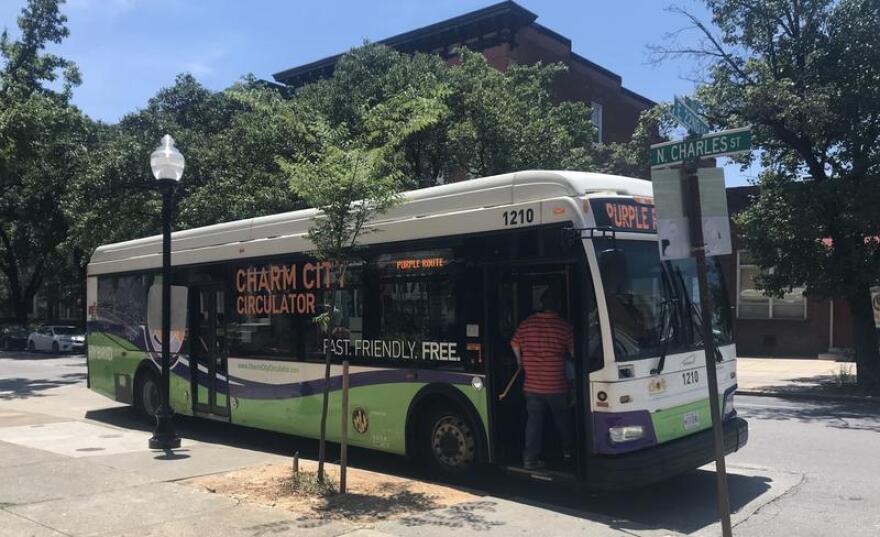It’s been a decade in the making, but a free circulator bus for Towson is en route and should arrive next fall. This will operate as a three year pilot to determine if it’s viable.
The idea survived years of powerful opposition.
Republican County Councilman David Marks, who represents Towson, has been pushing the circulator idea for a while. He campaigned on the issue in 2010, when he first ran for the county council.
That was three elections ago.
“This is a good example that in government, things take time,” Marks said.
And it can take time to get through Towson. There is no room to build any more roads and traffic snarls are common. The hope is some people will keep their cars parked and ride the circulator instead.
For years, the circulator project was blocked by a powerful skeptic, the late Kevin Kamenetz, who was county executive from 2010 until his death in May of 2018. In a 2014 interview, Kamenetz said Towson is in the suburbs, and people who live, work and shop there like their cars.
“Most of those people aren’t going to utilize a bus to get there,” Kamenetz said. “It’s not the type of pattern, probably, that is amenable to people using a circulator so it’s something that sounds good, but who is actually going to ride it?”
Proponents of the circulator believe the answer to that question includes seniors, shoppers and college students. There are two proposed circulator routes. Both would serve Towson University and Goucher College.
Baltimore County Executive, Johnny Olszewski supports giving the Towson circulator a three year tryout.
D’Andrea Walker, Baltimore County’s acting director of public works, said the goal is to have at least 200,000 riders on the circulator by the third year to prove that it’s viable.
“We’re happy with it if we get close to the 200,000,” Walker said. “That won’t be the only determinant factor to say whether or not the pilot will be successful but ridership is always important.”
Walker said concerns about COVID-19 and public transportation could also have an impact on those ridership numbers.
Circulators have to be financially supported to survive. A feasibility study estimates it will cost between $6.3 million and $12.6 million to run the Towson Circulator for the three year pilot. The county got a federal grant of $1.65 million to help pay for it. The rest may have to come from county tax payers.
“The county executive is committed to delivering the circulator program, the pilot program, for three years,” Walker said.
To defray that cost, Walker said they are looking for more grants and are hoping the large institutions in Towson that will be on the circulator’s route will help out financially.
The Towson Circulator will not link up with a major transportation hub, like Baltimore’s Charm City Circulator, which stops at Penn Station. Despite that, Sevgi Erdogan, a professor at the University of Maryland’s National Center for Smart Growth Research and Education, said the Towson Circulator potentially could have a lot of riders because it will be linking two colleges, three hospitals and multiple businesses.
“So as a local service, it seems like there is good enough demand to justify the service,” Erdogan said.
Other enticements to ride: It will be free, a bus will be by every 15 minutes or so, and it will run until 10 pm Monday through Saturday.
The county has ordered 12 buses. Circulators usually have eye-catching colors. Councilman David Marks likes the idea of a contest to decide that.
“My personal opinion is that gold should be one of the colors because gold is common to both Towson and Goucher College,” Marks said.
If the Towson Circulator works out, a county spokesman said they will consider a similar bus service elsewhere in the county.
You can find the plan for the Towson Circulator, including maps of the two proposed routes on Baltimore County’s website.




